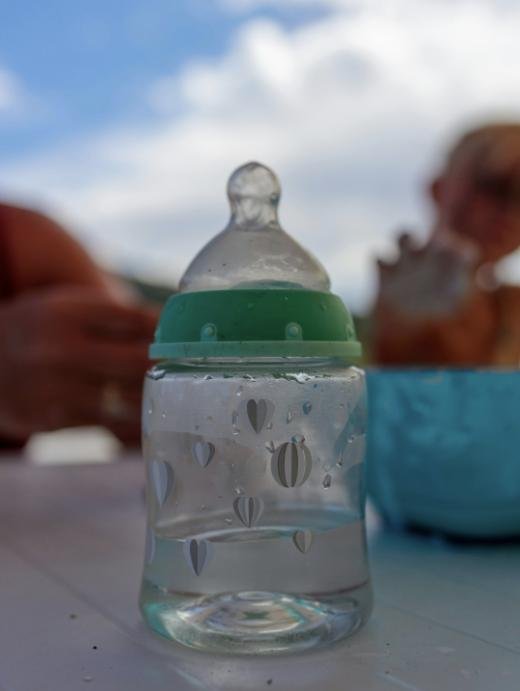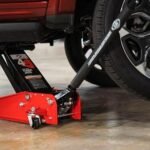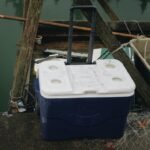Baby bottle coolers are specialized storage solutions designed to maintain the ideal temperature of milk and formula for infants during outings and travel. As parents often seek convenience without compromising their child’s health, these coolers serve as practical tools in the feeding regime of babies. By employing insulation and cool gel packs, baby bottle coolers can effectively preserve the temperature of the contents, ensuring that milk remains fresh for extended periods.
The primary purpose of a baby bottle cooler is to provide a reliable method of keeping expressed breast milk or formula at a safe temperature. For families on the go, whether visiting friends, going for a day trip, or enjoying outdoor activities, a bottle cooler makes feeding manageable and stress-free. These coolers typically come with insulated compartments that can accommodate various bottle sizes, making them versatile for different user needs. Additionally, they are designed to be portable, often featuring convenient straps or handles for easy transportation.
Moreover, with the growing awareness of proper baby care, parents are increasingly opting for solutions that help maintain hygiene and safety. Using a baby bottle cooler not only prevents spoilage due to temperature fluctuations but also facilitates a structured feeding schedule, allowing caregivers to plan ahead. Thus, understanding the benefits and functions of a baby bottle cooler can significantly aid parents in making informed decisions, enhancing the overall experience of nurturing their infants during outings. In this blog post, we will explore further benefits and some of the best options available on the market for different family needs.
Why Use a Baby Bottle Cooler?
Utilizing a baby bottle cooler can significantly enhance the experience of feeding infants, particularly for parents who are often on the move. One of the primary advantages of a bottle cooler is its ability to preserve milk temperature. This feature is crucial for ensuring that breast milk or formula remains at a safe temperature for consumption, which helps protect the nutritional integrity and efficacy of the milk. Maintaining an optimal temperature can reduce the risk of spoilage and bacterial growth, ensuring that your baby receives nourishment in a safe and healthy manner.
Convenience is another key benefit. Parents frequently find themselves requiring a source of nourishment for their baby when traveling, whether it be a family visit, a day out, or just a trip to the grocery store. Baby bottle coolers are specifically designed for portability, allowing bottles to be kept cool without the need for ice packs that can leak or become cumbersome. With various sizes and styles available on the market, many coolers are designed to fit effortlessly into diaper bags or car cup holders, making transport hassle-free and organized.
Moreover, maintaining hygiene during feeding outings is an often overlooked yet significant consideration. A bottle cooler not only keeps milk at the right temperature but also helps protect bottles from contaminants. Many coolers come equipped with insulated materials that guard against environmental factors, ensuring that bottles remain clean and safe for the baby. Real-life scenarios, such as a picnic in the park or visiting a friend’s house, highlight the practicality of having a baby bottle cooler at hand. With these advantages combined, it becomes clear that investing in a baby bottle cooler can enhance parental convenience while ensuring the baby receives quality nourishment regardless of location.
Types of Baby Bottle Coolers
When it comes to selecting a baby bottle cooler, parents can choose from various types that cater to different needs and preferences. These include soft-sided coolers, hard-sided coolers, and insulated bottle bags. Each option has unique features and benefits that make them suitable for specific parenting scenarios.
Soft-sided coolers are favored for their lightweight and flexible design. They often come with adjustable straps, allowing for easy transport. Made from insulated materials, these coolers maintain the temperature of baby bottles, keeping milk or formula fresh while on outings. Ideal for day trips, picnics, or travel, soft-sided coolers can easily fit in diaper bags or strollers without taking up much space. Additionally, many models feature multiple compartments, making it convenient to store additional items such as snacks or baby wipes.
In contrast, hard-sided coolers offer enhanced protection for the contents inside, making them suitable for longer excursions. These coolers generally have robust construction to avoid spillage or breakage, ensuring bumpy rides do not compromise the stored bottles. While they may be bulkier than their soft-sided counterparts, hard-sided coolers excel in maintaining temperature over an extended period. They are often equipped with secure latches and handles, making them great companions for family road trips or outdoor adventures.
Insulated bottle bags provide a more compact solution for keeping baby bottles cool. Typically designed to hold one or two bottles, these bags often include additional pockets for storing pacifiers or other small essentials. Their compact size makes them particularly popular for quick trips to the park or grocery store. Furthermore, many insulated bottle bags come with attractive designs, appealing to parents who prefer style along with functionality.
Overall, the choice between these types of baby bottle coolers ultimately depends on individual needs, lifestyles, and the common activities in which the family engages. Understanding each option helps parents make an informed decision that best suits their requirements.
Factors to Consider When Choosing a Baby Bottle Cooler
When selecting a baby bottle cooler, parents should consider several important factors to ensure they choose a product that meets their needs.
First, size and capacity are crucial. Parents should evaluate how many bottles they typically need to store and the cooler’s size. A compact cooler may be suitable for short outings, while larger models are preferable for day trips or longer travels. The cooler’s dimensions should align with parents’ lifestyle and feeding routines to ensure it accommodates their specific needs.
Next, insulation efficiency plays a significant role. High-quality insulation helps maintain the temperature of expressed milk or formula for extended periods. Look for coolers that advertise long-lasting performance in temperature retention, as this will ensure that the milk remains fresh and safe for the baby to consume. Some products may come with additional insulation features, such as double-walled designs or added thermal packs, which can enhance performance.
Portability is another essential factor. Parents should seek lightweight designs that are easy to carry, especially when on the go. Consider coolers with adjustable carrying straps or handles, which can provide added convenience when navigating busy environments like parks or airports.
Ease of cleaning is a critical consideration as well. A baby bottle cooler that comes apart easily or is designed with smooth surfaces can simplify maintenance. Many parents prefer materials that are dishwasher-safe to streamline the cleaning process, ensuring that the cooler remains hygienic and suitable for their baby’s feeding needs.
Finally, additional features can enhance the practicality of the cooler. Options like multiple storage compartments for extra bottles or snacks, as well as insulated pockets for cold packs, can be beneficial. In the end, careful consideration of these factors will result in a more satisfactory purchase that aligns with both the parents’ and baby’s requirements.
How to Use a Baby Bottle Cooler Effectively
Using a baby bottle cooler effectively can significantly enhance your feeding routine, especially during outings. To start, it is advisable to pre-chill the bottles before placing them in the cooler. This can be achieved by filling them with cold milk or formula and refrigerating them for a few hours prior to your departure. Having pre-chilled bottles ensures that your baby’s milk retains its temperature longer, providing assurance regarding food safety.
Packing the cooler strategically is also essential. Fill the cooler with ice packs, as they are more efficient than regular ice. Place the bottles in the cooler, surrounding them with these ice packs to maintain a low temperature. When using multiple bottles, a well-organized arrangement helps prevent spillage and makes it easy to access the required bottle without compromising the cooler’s overall temperature. It is crucial to keep the cooler closed as much as possible, as every time the lid is opened, cold air escapes, which may affect temperature retention.
Maintaining the temperature is key to ensuring your baby’s milk is safe to consume. Aim to keep the bottles at a temperature below 40°F (4°C) and monitor this throughout your outing. Many baby bottle coolers come with temperature indicators, which can be a helpful feature. It is also important to regularly check the ice packs to ensure they are still frozen, especially during longer trips.
Lastly, cleanliness is vital for the functional longevity of your baby bottle cooler. Wash the cooler and its components with warm, soapy water after each use to prevent any bacteria build-up. Ensure the cooler is completely dry before storage to avoid mold and mildew development. By following these practical tips, you can maximize the efficiency of your baby bottle cooler, ensuring your child receives safe and fresh feedings, whether at home or on the go.
Top Baby Bottle Cooler Recommendations
When selecting a baby bottle cooler, various models stand out in the market, each offering unique features tailored to different needs. Parents often seek products that ensure optimal temperature maintenance, portability, and ease of use. Below are some of the top recommendations based on consumer reviews and ratings.
The Baby Brezza Formula Pro Advanced is a popular choice among parents, featuring an innovative design that not only warms but also dispenses formula directly into the bottle. Its compatibility with many standard bottles enhances its versatility. Users appreciate its ease of use, especially during nighttime feedings.
Another highly rated option is the Munchkin Portable Bottle Warmer. This bottle cooler doubles as a warmer, making it a convenient option for parents on-the-go. Although it relies on a portable power source, its compact design allows it to fit easily in diaper bags. Reviews highlight its effectiveness in quickly warming milk while maintaining temperature consistency.
The Skip Hop Grab & Go Bottle Cooler is celebrated for its stylish design and practicality. It includes an insulated sleeve that keeps milk cold for hours and comes with a sturdy handle for easy carrying. Parents have noted its sleek look and functionality as significant advantages, making it a favorite among those wanting both style and efficiency.
Lastly, the Philips Avent Breast Pump and Bottle Cooler provides a comprehensive solution for breastfeeding mothers. It features a cooler that can hold up to four bottles and keeps them chilled for several hours. User feedback indicates that this cooler is not only functional but also keeps expressed milk safe and fresh, reinforcing its importance in routine feedings.
These products exemplify the range of options available to parents seeking effective and practical solutions for baby feeding needs. Each recommendation comes with a unique set of features, ensuring that every family’s preferences are met.
Alternatives to Baby Bottle Coolers
When considering alternatives to baby bottle coolers, several options are available that can effectively maintain the temperature of milk or formula for your baby. Among the most common alternatives are insulated bags, ice packs, and thermoses, each offering unique advantages and disadvantages.
Insulated bags are a popular choice for parents on the go. These bags are specifically designed to keep items cool and often come with extra compartments for storage. They can hold baby bottles, snacks, and other essentials, making them versatile for outings. The primary advantage of insulated bags is their convenience and portability; however, they may only provide moderate cooling when compared to specialized baby bottle coolers. Additionally, some insulated bags can be bulkier, which may not be suitable for every parent’s needs.
Ice packs are another effective way to keep baby bottles chilled. When paired with regular bags or coolers, ice packs can significantly extend the cooling time of milk or formula. They are relatively inexpensive and easy to use, as you simply freeze them ahead of time and place them alongside the bottles. However, parents should consider that ice packs can create condensation, potentially wetting the contents of the bag or cooler. Moreover, while beneficial for short trips, they may not maintain temperatures as long as dedicated baby bottle coolers.
Thermoses also present a viable option for those looking to keep liquids warm or cool. These vacuum-sealed containers are excellent for storing water, milk, or formula, ensuring they maintain their desired temperature for hours. The main drawback, however, is that most thermoses do not accommodate standard baby bottles, potentially necessitating the use of separate containers. In summary, while insulated bags, ice packs, and thermoses serve as worthy alternatives to baby bottle coolers, each comes with its own set of pros and cons that parents should carefully evaluate based on their specific needs.
Common Questions About Baby Bottle Coolers
As parents navigate the myriad of products available for their infants, baby bottle coolers often generate a range of questions regarding their functionality, safety, and overall value. Understanding these aspects can help parents make informed decisions about whether to invest in a baby bottle cooler.
One common inquiry involves the effectiveness of these coolers. Baby bottle coolers are designed to maintain a safe temperature for milk or formula for extended periods, particularly during outings. They often utilize gel packs or insulated materials to slow down the warming process. Research indicates that many bottle coolers can keep milk adequately chilled for several hours, making them a practical choice for parents on the go. Nevertheless, it is important for parents to verify the specific capabilities of the product they are considering, as performance can vary by brand and model.
Safety is another critical concern. Parents often wonder if using a baby bottle cooler can pose any risks to the contents. Most reputable manufacturers adhere to strict safety standards, ensuring that the materials used are free from harmful chemicals. However, it is advisable to regularly inspect the cooler for signs of wear and tear and to ensure it is thoroughly cleaned after each use to prevent contamination.
Lastly, parents frequently ask if the investment in a baby bottle cooler is justified. The answer often lies in their lifestyle and travel habits. For parents who frequently travel or spend significant time away from home, a bottle cooler can prove invaluable. It allows for flexibility and ease during outings, providing peace of mind that their baby’s nourishment is securely stored. Ultimately, weighing the benefits against individual circumstances will aid in determining if a baby bottle cooler is a worthwhile investment for each family.
Conclusion: Is a Baby Bottle Cooler Right for You?
When considering whether a baby bottle cooler is a suitable addition to your collection of baby care essentials, it is essential to reflect on several key points discussed throughout this blog post. A baby bottle cooler offers a convenient solution for parents who are frequently on the go. Its ability to maintain an optimal temperature for stored breast milk or formula without refrigeration plays a crucial role in preserving the quality of your baby’s nutrition.
Moreover, baby bottle coolers come in various designs and functionalities, accommodating different lifestyles and preferences. Whether you opt for a simple insulated bag or a more advanced model featuring built-in cooling technology, these gadgets can be tailored to fit individual needs. For parents who travel or spend considerable time outside the home, the practicality of having a cooler may significantly enhance the feeding experience for both the parent and the child.
However, it’s essential to assess your personal circumstances. If you are primarily home-based and rely on immediate refrigeration for feeding, a baby bottle cooler may not be as necessary for your routine. On the other hand, those who frequently venture out for extended periods might find it invaluable, as it provides peace of mind that your baby’s milk remains fresh and safe for consumption.
Ultimately, the decision to purchase a baby bottle cooler should be based on your specific lifestyle needs and feeding habits. By weighing the benefits against your day-to-day demands, you can make an informed choice that best supports your baby’s nourishment and your convenience. Each family’s situation is unique, and prioritizing what enhances your parenting experience will ultimately guide you toward the right decision.


